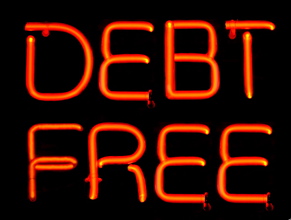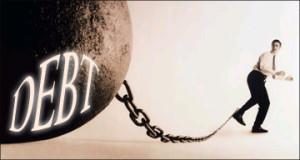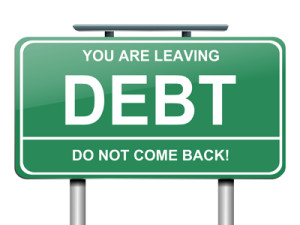by Sarah Adams -
 Last year I wrote A Prepper’s Budget, about the budgeting philosophy that has helped us work toward being debt-free. That post, however, talked mostly about our ongoing budgeting strategies and did not really address how to get started.
Last year I wrote A Prepper’s Budget, about the budgeting philosophy that has helped us work toward being debt-free. That post, however, talked mostly about our ongoing budgeting strategies and did not really address how to get started.
While it depends on what your goals are, as Trace and I have talked about before on this blog, getting debt-free was our primary goal and certainly recommended by many in the prepping world. In order to be debt-free you must stop using the credit cards. You cannot be debt-free if you’re still digging the hole.
 Step 1: Pay your monthly bills. Can you pay all of your monthly bills with your current income? In order to make any kind of dent into your debt, you have to be able to cover all your monthly expenses with your monthly income. If you are not in a position to pay all your bills each month you need to take a hard look at your lifestyle. What can be dropped? Do you need cable? Can you find a cheaper cell phone plan? What about income? Can you pick up extra hours? Once you can cover all your normal monthly expenses, without dipping into the credit card, you’re on your way.
Step 1: Pay your monthly bills. Can you pay all of your monthly bills with your current income? In order to make any kind of dent into your debt, you have to be able to cover all your monthly expenses with your monthly income. If you are not in a position to pay all your bills each month you need to take a hard look at your lifestyle. What can be dropped? Do you need cable? Can you find a cheaper cell phone plan? What about income? Can you pick up extra hours? Once you can cover all your normal monthly expenses, without dipping into the credit card, you’re on your way.
Step 2: Create a financial emergency fund. This is Dave Ramsey’s Baby Step 1 – the $1,000 emergency fund. He recommends keeping this in cash, someone accessible — but not so accessible that you go to it when it’s not a true emergency. The idea is to set aside $1,000 to cover the unexpected; so that when the unexpected does happen you don’t have to use credit (and go deeper into debt). I know it isn’t always easy to save up to $1,000, especially if Step 1 was a challenge, but it’s so important to be prepared for those emergencies that will come so that you can continue down the path to debt-free.
 Step 3: Debt snowball strategy. Again, we followed Dave Ramsey’s recommendation and paid off our debt using the concept of a “debt snowball”. The idea is that you pay any extra toward the debt with the smallest principal (don’t worry about the interest rates). Say the minimum payment is $50 a month and you add an extra $10 a month to that payment; once that bill is paid you now take that $60 and put it towards the debt with the next-smallest principal outstanding. This $60 is over and above the minimum payment for this debt. As you can see the payments you are making “snowball” quickly.
Step 3: Debt snowball strategy. Again, we followed Dave Ramsey’s recommendation and paid off our debt using the concept of a “debt snowball”. The idea is that you pay any extra toward the debt with the smallest principal (don’t worry about the interest rates). Say the minimum payment is $50 a month and you add an extra $10 a month to that payment; once that bill is paid you now take that $60 and put it towards the debt with the next-smallest principal outstanding. This $60 is over and above the minimum payment for this debt. As you can see the payments you are making “snowball” quickly.
Step 4: Begin saving. Now that you have paid off, or at least paid down, your debt you can start saving. Once we had our debt paid off, we were able to save for and buy a truck last year with the money we had been using for our snowball. We have also worked to have at least one month’s expenses in savings. Trace and I are currently saving toward the new house, but after that we plan to save up to having the three to six months’ expenses in savings. The best part, by doing it this way, our old debt no longer needs to be included in the amount we need to save to cover our monthly expenses. We have less debt and, therefore, fewer expenses to worry about in an emergency.
We followed the above steps while doing a monthly zero-based budget as I described last year. The budget allowed us to see our expenses each month, in black and white, and helped us project when we could move from one step to the next.
 Getting started can be incredibly overwhelming and money is a challenging topic to tackle, but it is so worth it. As a prepper, being debt-free is one of the best things you can do to prepare for any scenario – big, small, local or nation-wide.
Getting started can be incredibly overwhelming and money is a challenging topic to tackle, but it is so worth it. As a prepper, being debt-free is one of the best things you can do to prepare for any scenario – big, small, local or nation-wide.



